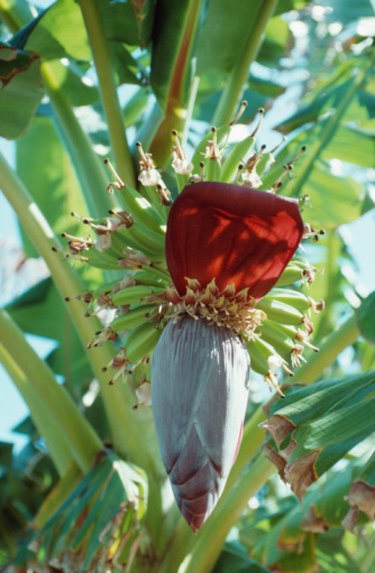
Banana trees need room for their root mats to expand and produce additional stems. The correct spacing depends on the size of the plants and their root systems. Planting bananas close together protects the plants from winds and reduces weeds, but increases competition for nutrients and disease transmission. Ideal spacing optimizes fruit production and depends on a number of factors.
Site Selection
Video of the Day
Bananas need a planting site away from buildings, power lines and other trees. Planting near a wall or fence provides shade and a beneficial windbreak. Allow 10 feet clearance, as a minimum, to allow for root growth. Avoid planting bananas in exposed areas; the herbaceous trees are not strong and may blow over in high winds. Choose a warm spot in the landscape with fertile, well-drained soil.
Video of the Day
Spacing for Dwarf Plants
Dwarf bananas are smaller than standard bananas and can be planted closer together. Allow at least 8 feet between trees when planting, more stems will grow from the root mat. For grove planting, space dwarf trees 8 feet apart in rows that are 12 feet wide.
Spacing for Full Size Varieties
Banana varieties vary in size and need to be planted accordingly. Most varieties need at least 12 feet or more of space. Smaller varieties can be planted 10 to 11 feet apart. In a mature mat, the roots can extend outward for up to 18 feet. For commercial groves, a spacing of 11 by 11 feet or 8 by 12 feet works well for equipment, while maximizing production.
Controlling Plants in the Mat
Once the mat is established, remove all but the main trunk and three additional stems of various sizes. Controlling the number of plants within the mat allows the plant to get enough nutrition and avoids overcrowding. Additional stems are necessary because the main trunk will flower and fruit only once, then be replaced by one of the additional stems.